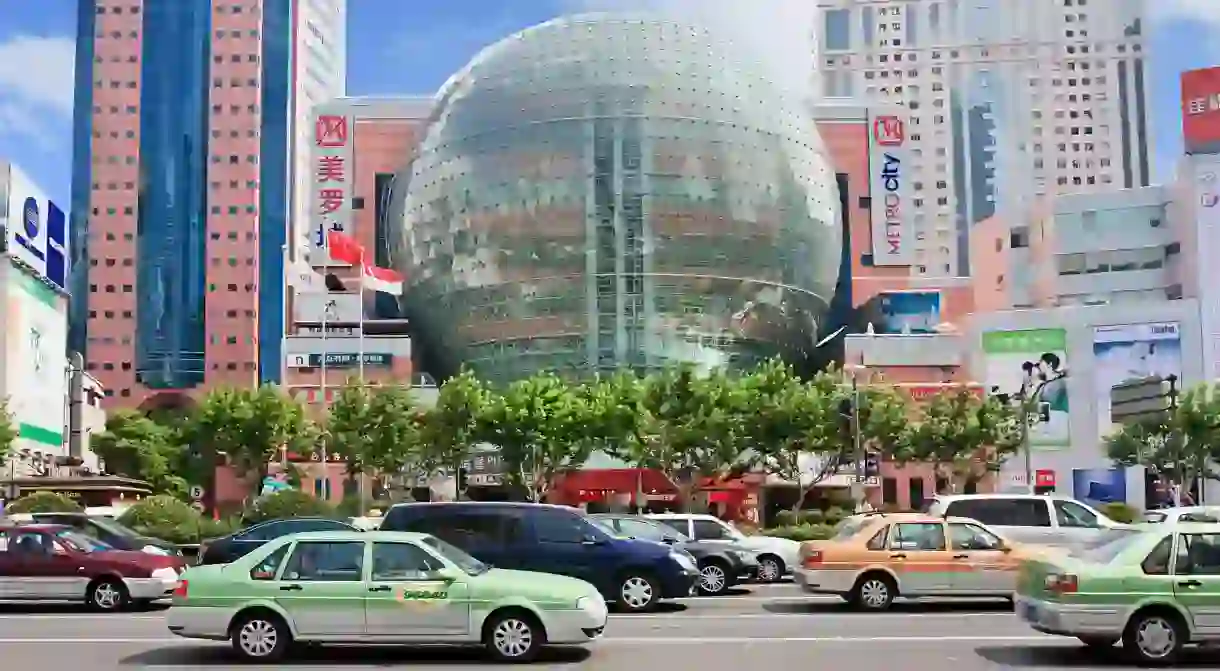A Historical Tour of Shanghai’s Xujiahui Neighbourhood

Explore the origins of Xujiahui in downtown Shanghai, the nexus of China’s first cross-cultural exchanges with westerners.
With its mass of shopping malls and office towers rising above a tangle of metro lines, Xujiahui has undoubtedly shed its agricultural and industrial roots. Streams once flowed through this southwest corner of downtown Shanghai, now celebrated as the birthplace of Shanghai-style culture. Take a historic walking tour of Xujiahui’s fascinating sites, starting at the memorial hall dedicated to the area’s namesake.
Xu Guangqi Memorial Hall
Historical Landmark

China’s initial encounters with the west – and the resulting cultural inclusivity that Shanghai still enjoys today – started hundreds of years ago in Xujiahui, and Xu Guangqi Memorial Hall is a fitting place to learn about this seminal time. Xu Guangqi was a Shanghai-born scientist who became the Minister of Rites and Grand Secretary under the Ming dynasty (1368–1644). Consequently, his contributions and influence were huge. In fact, the area’s original name, Zi-ka-wei, was later changed to Xujiahui, which means ‘Xu family’s property at the river junction’. Xu, who was famously converted to Catholicism by Italian Jesuit priest Matteo Ricci, donated land to the Catholic Church. The pair worked together on cross-cultural exchanges that opened China up to Western science, technology and culture – and vice versa.
Xu Guangqi’s Tomb
Historical Landmark
After getting a primer on Xu Guangqi’s cultural and scientific contributions to China, pay homage to the scientist at his burial site in Guangqi Park. This tranquil green space is also an object lesson in Ming dynasty imperial burial traditions. Xu’s tomb was originally built here in 1641, and the sacred pathways and ornate memorial archways were restored in 2003.
Xujiahui Cathedral
Cathedral

If the imposing Xujiahui Cathedral looks vaguely familiar, that’s because Steven Spielberg featured it in the opening scenes of his 1987 film Empire of the Sun, which was partly filmed and set in Shanghai. In reality, the Gothic twin towers of this church (also called St Ignatius Cathedral) are modern-day markers of Shanghai’s Roman Catholic diocese, which is headquartered here. Xu Guangqi invited the French Jesuits to create a missionary centre in the area, and he donated some of his family’s land to help the cause. In 1910 the Jesuits completed the brick-and-wood building with its pair of bell towers topped with spires that pierce the Shanghai skyline. During the Cultural Revolution the church became the warehouse of the Shanghai Fruit and Grocery Company before being restored in the late 1970s.
Former Site of the Virgin Mary Convent
Historical Landmark
There’s little left of the original 1926 complex, a five-storey European-style building that was the site of the former Virgin Mary Convent. One remnant is now occupied by Ye Olde Station restaurant, which has become something of a public museum showcasing Shanghai antiques from the ’20s and ’30s. Another pair of curiosities lies out back in the shaded garden – two centuries-old train carriages manufactured in Germany and Russia. They were built, respectively, for Empress Dowager Cixi and Madame Soong Ching-ling, the wife of Dr Sun Yat-sen.
Xujiahui Park
Park
Former Site of Pathé Records
Historical Landmark
Toward the east end of Xujiahui Park is a gorgeous 1921 red-brick villa, also known as La Villa Rouge, which now houses a restaurant of the same name. Back in the day, it was the Asian subsidiary of France-based Pathé Records and the first major record company in Shanghai. It held the rights to most of the mandopop, or Mandarin pop music, that was produced in the late ’30s and ’40s. Eventually, the Shanghai factory was acquired by Columbia Records, which later became part of EMI. In 1935, the company recored March of the Volunteers, the theme song of the film Sons and Daughters in a Time of Storm (1935), which became China’s national song in 1949. In an ironic twist to Pathé’s history in Shanghai, the Communist Party shut the factory down in the same year.
New Hengshan Cinema
Building, Cinema, Movie Theater, Theater













